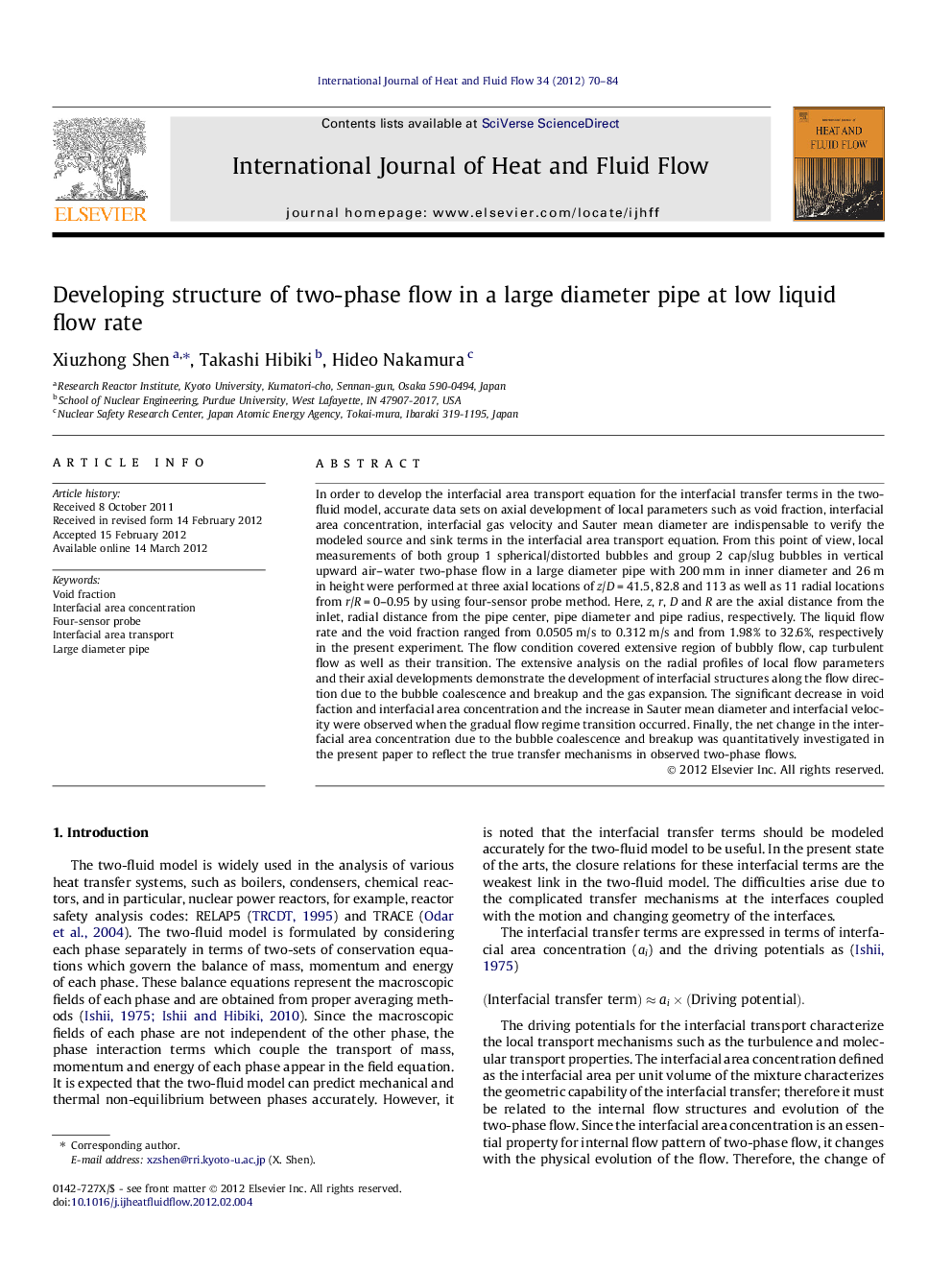| Article ID | Journal | Published Year | Pages | File Type |
|---|---|---|---|---|
| 655656 | International Journal of Heat and Fluid Flow | 2012 | 15 Pages |
In order to develop the interfacial area transport equation for the interfacial transfer terms in the two-fluid model, accurate data sets on axial development of local parameters such as void fraction, interfacial area concentration, interfacial gas velocity and Sauter mean diameter are indispensable to verify the modeled source and sink terms in the interfacial area transport equation. From this point of view, local measurements of both group 1 spherical/distorted bubbles and group 2 cap/slug bubbles in vertical upward air–water two-phase flow in a large diameter pipe with 200 mm in inner diameter and 26 m in height were performed at three axial locations of z/D = 41.5, 82.8 and 113 as well as 11 radial locations from r/R = 0–0.95 by using four-sensor probe method. Here, z, r, D and R are the axial distance from the inlet, radial distance from the pipe center, pipe diameter and pipe radius, respectively. The liquid flow rate and the void fraction ranged from 0.0505 m/s to 0.312 m/s and from 1.98% to 32.6%, respectively in the present experiment. The flow condition covered extensive region of bubbly flow, cap turbulent flow as well as their transition. The extensive analysis on the radial profiles of local flow parameters and their axial developments demonstrate the development of interfacial structures along the flow direction due to the bubble coalescence and breakup and the gas expansion. The significant decrease in void faction and interfacial area concentration and the increase in Sauter mean diameter and interfacial velocity were observed when the gradual flow regime transition occurred. Finally, the net change in the interfacial area concentration due to the bubble coalescence and breakup was quantitatively investigated in the present paper to reflect the true transfer mechanisms in observed two-phase flows.
► Experiments are performed in an ultra-high large diameter pipe. ► Local data for both groups 1 and 2 bubbles are measured at low liquid flow rates. ► Development of interfacial structures along the flow is demonstrated and analyzed. ► Significant parameter changes are observed in flow regime transition. ► Net IAC change due to bubble coalescence and breakup is investigated.
